American Gothic Painting
 |
| American Gothic by Grant Wood (1930) |
 |
| Nan Wood Graham and Doctor Byron McKeeby |
American Gothic Parodies and the Detail of Plants
 |
| American Gothic Detail of the Snake Plant (Mother-in-Law's Tongue) |
 |
| Woman with Plants (Portrait of Hattie Weaver) by Grant Wood (1929) |
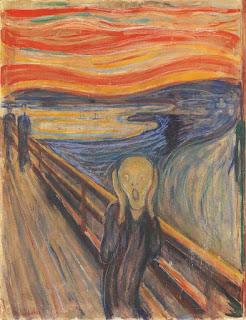 |
| The Scream by Edvard Munch (1893) |
Among
television programs, “A Town Without Pity” episode of the HBO drama “Oz”, “The
Simpsons”, “Muppet Show” of Jim Henson, “The Masterpiece” episode of The Dick
Van Dyke Show, “FarmerBob” episode of the “SpongeBob SquarePants” cartoon
series and the 1965 comedy series “Green Acres” include the referances and
inpirations from American Gothic. The famous archaic image of the couple has
become a subject for the “American Gothic” named mystery drama genre TV show of
CBS, created by Corinne Brinkerhoff, the writer and producer. Through its
influential nature, American Gothic has been widely used by common people, TV
producers or even advertisers. It can be said that Wood’s masterpiece shares
the same fate with expressionist Edvard Munch’s The Scream.
American Gothic Artist, Grant Wood
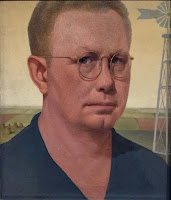 |
| Self-Portrait by Grant Wood (1932) |
 |
| Daughters of Revolution by Grant Wood (1932) |
 |
| Washington Crossing the Delaware by Emanuel Leutze (1851) |
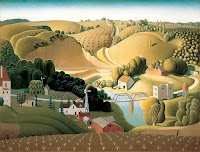 |
| Stone City, Iowa by Grant Wood (1930) |
 |
| Arbor Day by Grant Wood (1932) |
American Gothic Facts and Legacy
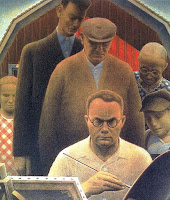 |
| Artist with Palette (Self-Portrait) by Grant Wood (1935) |
Creation Process of American Gothic and Regionalism
 |
| The Dibble House (The American Gothic House) Built by Catherine and Charles Dibble (1881) |
 |
| First Study Sketch on Letter Paper for the American Gothic by Grant Wood (1930) |
 |
| Self-Portrait by Jean-Édouard Vuillard (1889) |
American Gothic Analysis
 |
| Portrait of a Man (Self-Portrait) by Jan van Eyck (1433) |
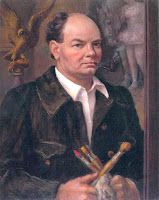 |
| Self-Portrait by John Steuart Curry (1937) |
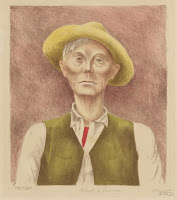 |
| Portrait of a Farmer (Self-Portrait) by Arnold Lanch (1936) |
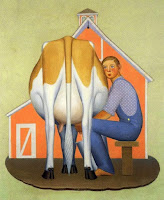 |
| Boy Milking a Cow by Grant Wood (1932) |
 |
| American Gothic and Woman with Flowers Details of Brooches |
 |
| The Arnolfini Portrait by Jan van Eyck (1434) |
American Gothic Meaning of Windows and Wood’s Signature
 |
| American Gothic Detail of the Signature of Grant Wood |
American Gothic Literature of Cameo Brooch and Face Expressions
 |
| American Gothic Detail of Trident Rake |
American Gothic by Grant Wood
 Reviewed by Articonog
on
February 05, 2022
Rating:
Reviewed by Articonog
on
February 05, 2022
Rating:
 Reviewed by Articonog
on
February 05, 2022
Rating:
Reviewed by Articonog
on
February 05, 2022
Rating:





No comments: